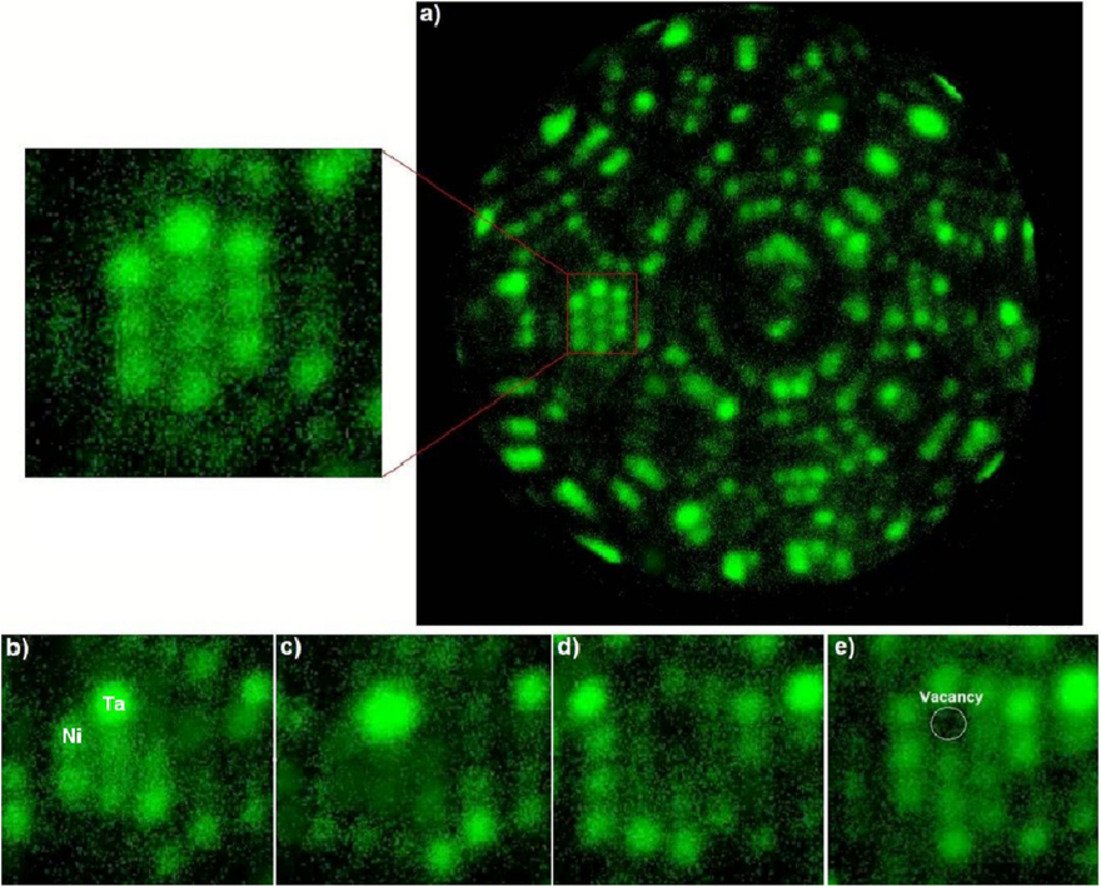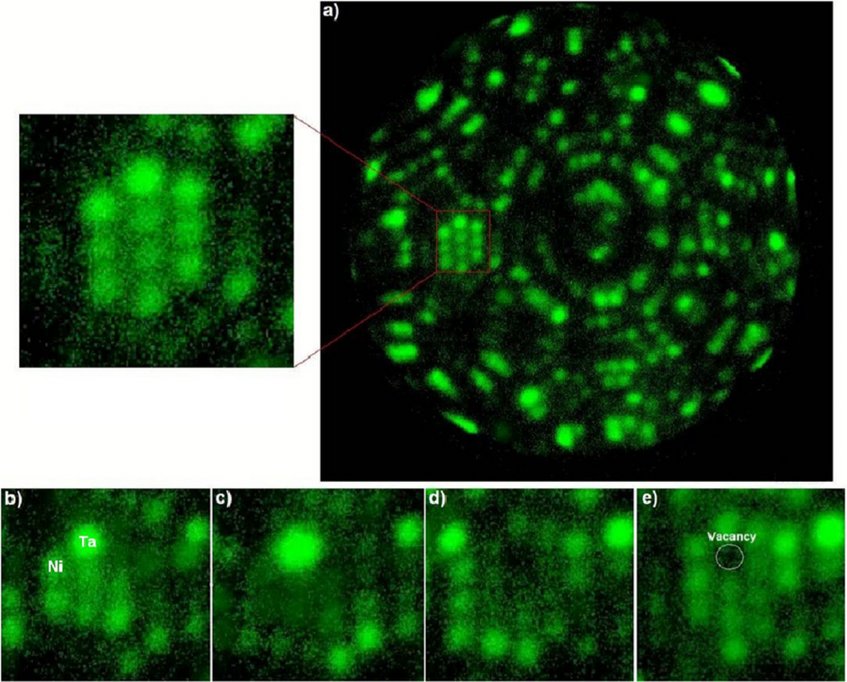Advancing analytical field-ion microscopy
This project is led by Felipe Morgado and Leigh Stephenson, and targets the analysis of single vacancies in nickel, but also their chemical neighborhood with tantalum, using Atom Probe Tomography, Field Ion Microscopy in conjunction with Time-of-Flight Mass Spectrometry, and Density-Functional Theory.
Vacancies in solids are the key defects behind substitutional diffusion, chemical decomposition & partitioning, spinodal transformation, dislocation creep, capillary-driven Ostwald ripening, nucleation, phase transformation, and many other mechanisms that make up the materials science cosmos.
Although vacancies have eminent effects on these phenomena, with an exponential temperature dependence, we usually cannot see them, except through indirect signals such as positron annihilation.
Here we present a study, led by Felipe Morgado and Leigh Stephenson, where they revealed not only single vacancies in Nickel, but also their chemical neighborhood (Tantalum), using Atom Probe Tomography, Field Ion Microscopy in conjunction with Time-of-Flight Mass Spectrometry, and Density-Functional Theory.
We used a creep-deformed binary Ni-2 at.% Ta alloy to be examined using APT and aFIM. We prepared needle-shaped specimens suitable for APT and FIM at the FEI helios PFIB. Instead of the common gallium source a xenon plasma ion source was used. The APT and FIM measurements were performed on a LEAP 5000 XS (Cameca Instruments Inc.). To image the vacancies in the first nearest-neighbour position to Ta atoms aFim was used. The interpretation of the FIM contrast was achieved by using density-functional theory (DFT) calculations.
The APT analysis revealed a random distribution of Ta within the Ni matrix.
In summary, we provide experimental evidence for vacancy Ta affinity through aFIM-DFT in a crept Ni-2 at.% Ta alloy. A random distribution of Ta in Ni is first revealed by a Ta-Ta nearest neighbor distance analysis of the atom probe data.
As a part of this project we developed a hybrid experimental approach, which in principle, can exhibit true atomic resolution with elemental discrimination capabilities, neither of which atom probe nor FIM can individually fully deliver—thereby making this new approach, termed analytical field ion microscopy (aFIM), unique.

